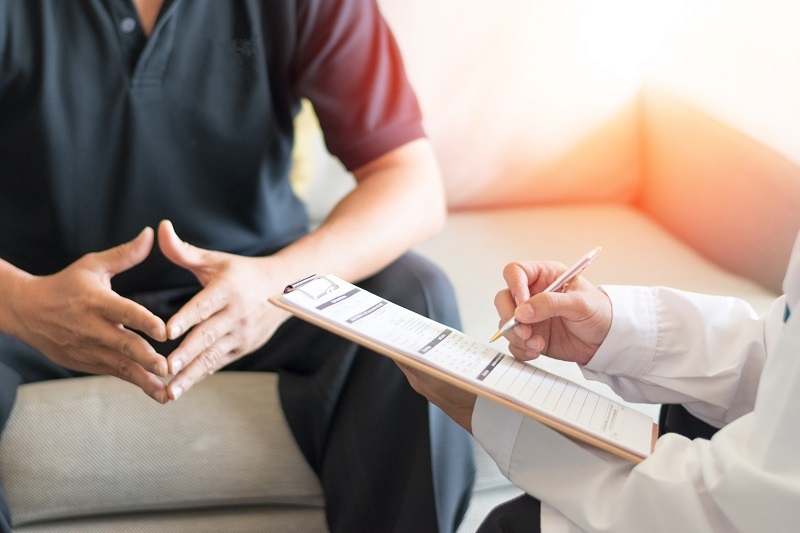Testicular Cancer: Identifying Questionable Lumps

July 03, 2023
When an unexpected lump appears in the scrotum, the pouch of skin holding the testicles, it’s naturally a cause for worry. Fortunately, most testicular lumps aren’t cancerous and don’t threaten your health, says Nitin Yerram, M.D., co-director of Urologic Oncology and director of Urologic Research at Hackensack University Medical Center. “Don’t panic,” he says, “but do understand what to watch out for.”
What Do Testicular Lumps Feel Like?
Lumps can develop anywhere inside the scrotum, ranging from tiny—the size of a pea—to marble-sized or even larger. Most men first notice a lump when they’re showering or dressing. But sometimes they’re visible. “A lump may make your scrotum look a bit swollen,” Dr. Yerram says.
Patients often describe testicular lumps in various ways:
- Soft and fluid-filled
- Hard to the touch
- Painful or tender
- Feels attached to one of the testicles
“Ask your doctor if doing regular self-exams makes sense for you to keep tabs on any changes in your testicles,” Dr. Yerram says. “A self-exam involves holding each testicle between your thumb and fingers and gently rolling it back and forth to feel for anything that’s out of the ordinary. Keep in mind that it’s normal for one testicle to be slightly larger than the other.”
Possible Causes of Testicular Lumps
Many conditions—most of them harmless—can lead to testicular lumps, including:
- Cysts, or fluid-filled sacs
- Hernia, when tissue pushes into the scrotum through a weak spot in the abdominal wall
- Epididymitis, an infection or swelling of the tube at the back of the testicles that stores sperm
- Varicocele, an enlargement of veins inside a testicle
- Hydrocele, a fluid-filled sac that develops around a testicle
When to See a Doctor
Since some testicular lumps can affect a man’s fertility, even if they’re not cancerous, your doctor should examine any lump that develops in your scrotum.
“Some lumps are more serious than others, and harder lumps are more likely to signal something serious. But no lump should go unchecked,” Dr. Yerram says.
Immediately contact your doctor if a lump in your testicle:
- Appears suddenly
- Causes pain
- Seems infected
Your doctor may use several different tests to identify the cause of a testicular lump, including:
- Blood or urine tests
- Imaging scans, including ultrasound
- Transillumination, which shines a bright light behind the scrotum to visualize a lump’s location and size, as well as whether fluid has accumulated
“You’ll also be asked about your medical history and undergo a thorough physical exam that includes feeling the scrotum to determine a lump’s characteristics,” Dr. Yerram says. “Treatment—if you need any—depends on the cause of the lump. But the first step is the most important one: Get it checked.”
Next Steps & Resources:
- Meet our source: Nitin Yerram, M.D.
- To make an appointment with a urologic oncologist near you, call 800-822-8905 or visit our website.
The material provided through HealthU is intended to be used as general information only and should not replace the advice of your physician. Always consult your physician for individual care.






